Every year, male US Air Force aviators and supporters grow ridiculously over-the-top moustaches in March. The service comes to resemble a legion of flight-suit-adorned Marios. And as the month fades into April and lips are shorn, it never ceases to make me nostalgic in remembrance of the man this whole spectacle is about. The most incredible badass the service arguably ever produced. This year, getting back into the writing habit, I choose to share an updated version of some of my reflections on the late, the great Robin Olds.
I will argue that while the service has fought many wars and battles and had many heroes in its 75 years, no other individual more personifies the spirit of American combat aviation. And I will argue as well that by re-touching his legacy every March, generations of airmen continue to signal that they understand, even if only by osmotically absorbing tacit messages buried in the received wisdom over time, what airpower is all about. And they remain committed to keeping it alive even as the wings of time and bureaucracy carry the service ever away from its brilliant stirrings.
An old Air Force friend of mine was doing some research a few years ago and found himself leafing through the papers of retired Brig. Gen. Terryl Schwalier. Those attuned to USAF history will recall that Schwalier was the commander at the center of controversy surrounding the 1996 Khobar Towers bombing, a terrorist attack which killed 19 and injured 498 at a remote airbase in Saudi Arabia. A second’s digression is worthwhile here to punctuate how effectively policymakers sidestepped the foreign policy meaning of this incident, which was an alarm about our persistent and dubiously warranted military occupation of the Middle East.
Schwalier was scapegoated by the Clinton Administration, which triggered the resignation of Gen. Ronald Fogleman, whose integrity, the story says, prevented him from continuing as the Air Force’s Chief of Staff in the face of what he viewed as an injustice and an intolerable dishonor.
This is the popularized version of Fogleman’s resignation, which was actually just as much about bureaucratic headwinds and his lack of fit with the Administration’s defense philosophy as it was about the transparently unfair treatment of Schwalier.
Interestingly, it turns out that as a Major in 1981, Schwalier had researched and written a paper for Air Command and Staff College. The report, titled “The Tactical Flight Commander — Developing Warriors,” was designed to give guidance to junior commanders, identifying personal qualities and leadership traits essential to success. As part of his research, Schwalier reached out to several prominent leaders in the airpower community to ask their insights.
Among the names on that roster was someone whose powerful blend of stalwart leadership and warrior acumen made him a favorite among operators at the time. Someone with whom fighter pilots in particular heavily identified. That someone was none other than retired Brig. Gen. Robin Olds.
For the uninitiated, a bit of Olds lore will be useful.
Robin Olds is the undisputed father of modern fighter aviation. More than that, he is the contemporary icon for American military aviation more generally. Olds was a Triple Ace in World War II, scoring 16 kills over the deadly skies of Europe in the pioneering days of dogfighting … where courage and instinct weighed a lot more than they do in contemporary combat.
He commanded a squadron of fighter pilots in his mid-20s and stayed in uniform after the war, rising to the rank of Colonel by the time Vietnam rolled around … this despite earning a reputation for serial disobedience bordering on insubordination. He abhorred the post-war bureaucracy the Air Force had become and made no bones about it, especially when he saw institutional idiocy threatening combat effectiveness. Olds got away with pushing back constantly because he was that good. The generals knew they would need him.
And they did. Olds was widely regarded as the best wing commander of the Vietnam War, both because of his individual warfighting skills and for the example he set as a combat leader, which made him legendary. He spent his time after Vietnam toiling begrudgingly in various non-combat posts before retiring in 1973 as a one-star. The Air Force promoted him in spite of a strong tradition of capping off the careers of renegades short of the upper echelon, but Olds had come of age during the rise of tactical aviation, demonstrating the flexibility, innovative impulse, and team leadership regarded at the time as the ascendant blend of qualities needed for leadership beyond wing level.
More than any other individual, Robin Olds represents the combat version of the United States Air Force: lethal, frictionless, brilliant, quick, not to be trifled with. His legend is encased in a work-hard, play-hard patina … a collegiate All-American athlete who married a Hollywood starlet, partied like a rock star, and rumbled fear into the hearts of adversaries with every sonic boom he created soaring through the wild blue.
The late Olds responded to Schwalier’s request in a way consistent with his reputation. He sent a five-page handwritten letter absolutely dripping with leadership.
Olds not only helped Schwalier with his original question, but gave him some incredible bonus material: high-definition insight into systemic problems with the institutional Air Force and the timeless struggle of airmen and leaders in finding fulfilling roles in a bureaucratic morass that seems to only grudgingly tolerate its dual status as a combat organization.
Olds’ words, brilliantly luminous in 1981, ring just as true today.
Here’s a transcription of his response (I’ve included captures of the actual pages at the end of this article):
30 Nov 1981
Dear Major Schwalier,
Your question, or better request, is provocative, to say the least. I have thought much since receiving your Oct 21 letter, and the more I consider your topic, the more difficult it becomes to frame a reasonable or even useful response. I’ll try to boil down my thoughts, hoping something useful may distill.
First, let me get some negatives in perspective. In my view, current Air Force philosophy and practice have all but eliminated any meaningful role playable by an officer placed in a so-called position of command. Authority has evaporated, sucked up to the rarified heights of “they,” who are somehow felt to exist in the echelons above. For your information, “they” do not exist. Neither is there any “he” fulfilling that role. Authority is expressed through the medium of committee consensus, leadership has become a watered down adherence to the principles of camp counsellorship, with a 90% emphasis on avoiding any action that may in any way be questioned by any one of hundreds of piss ants on the administrative ladder above. In fact, leadership (and I use that term with contempt) has become a process of looking busy as hell while doing nothing, avoiding personal commitment, and above all, making no decision without prior approval.
Historical example: as a 22 year old Major, commanding a squadron in 1945, I was responsible for and empowered to: pay the troops; feed them; house them; train them; clothe them; promote; demote; reward; punish; maintain their personnel files, etc. When I retired as a BG in 1973, I possessed not one of those authorities or responsibilities. Get the drift?
And you ask the importance of a flight commander. I am tempted to say NONE. But that is not true, for in spite of the system, in spite of the executive and administrative castration, a man instinctively looks to a system of military authority in a military situation or system. If that authority is waffled or watered, he still looks to those appointed to the military echelons to do their best under the circumstances. A man (a nation for that matter) wants, demands, leadership. So today’s flight leader/commander leads and commands by example, by appeal to basic instinct, and by light footed avoidance of error, like walking a tightrope. He has responsibility, for sure. But he does not have authority, or freedom of discretion/interpretation. Unfortunately, in some units he really isn’t given much voice. Yet he functions, and if he is successful (perhaps a better word is “effective”) it is greatly to his credit for having done so under the prevailing circumstances.
Another thought. All else to the contrary, two basic demands are faced by the Flight Commander. One is PEACE, the other is WAR. It has been my experience, in the fighter business I hasten to add, that the man who may excel under the one is not necessarily worth a damn under the other. Many examples come to mind. I do not (and did not) condemn one man or the other, rather I accepted the challenge of recognizing the difference and choosing accordingly.
I hope some of this makes sense.
Sincerely,
Robin Olds
P.S. For your information, there is no such thing as HQ, USAF. The highest echelon is a faceless entity, composed of thousands of diverse individuals loosely arranged by a system of interlocking committees and headed by an individual technically labeled the “Chief of Staff.” Note he is not called the Commander. By law, he cannot be. By nature he is forced to be the consummate bureaucrat, fighting for the all mighty dollar, serving as a buffer between Sec Def / Congress and the people and mission of his service — a demanding, demeaning role playable by very few.
An entire book-length analysis could easily be written from unpacking this letter. Seldom can any airman hope to encounter a more furiously burning, dense bundle of essential truths. But two things are especially resonant.
One is the recognition of Olds’ considerable intellect. The popular image of the lovable, devil-may-care, warrior firebrand is one Olds earned in spades. But it’s an incomplete portrait. He thought carefully and in complex depth about his profession and its place in national affairs, and was extraordinarily literate in expressing himself about it.
This is an important point. Olds stands as the definitive example many young officers strive to embody. The notion of a binary division separating “intellectuals” from “true leaders” remains firmly entrenched in the culture of the modern U.S. Air Force, and it leads to a host of misguided and counterproductive policies, decisions, and characterizations. Olds proves to us that such a false dichotomy is baseless in the first place. It’s not only possible but absolutely essential that an air warrior also be a reflective and even contemplative leader. Olds lived up to the warrior-scholar standard, and his words to Schwalier exhort others to do the same.
Second, we get from Olds that most current problems are not new. He lamented issues as he retired in 1973 that remained live issues as he mentored Terry Schwalier in 1981. Top heaviness, micromanagement, loss of combat focus, misprioritization … all are directly addressed or implied in Olds’ letter. All have continued to visit upon the Air Force.
Lest we find this discouraging, it’s actually good news. Much of what troubles Olds in his letter had been addressed, ameliorated, or in some cases hunted toward extinction by the time the Air Force walloped Saddam Hussein a decade later in the First Gulf War. The institution got relatively healthy and remained that way for much of the 1990s, enjoying a Renaissance of sorts before the combined pressures of post-Cold War adaptation and response to the attacks of September 11, 2001 allowed numerous maladies to creep back in before multiplying.
Whether these recurring institutional illnesses are tied to protracted wars, keyed to resources, or simply cyclical is a great discussion for another time. In the interim, we could do a lot worse than to consider the learned words of the ultimate airman.
If you haven’t yet digested “Fighter Pilot: The Memoirs of Legendary Ace Robin Olds,” do yourself a favor and give it a read. We have a lot to learn from Robin Olds. This letter demonstrates how so much of the wisdom he bequeathed to us remains undiscovered.
TC is an American veteran, pilot, and writer who idolizes Robin Olds. He retired from the U.S. Air Force as Lieutenant Colonel, having commanded a C-17 squadron in combat and earned the Distinguished Flying Cross.





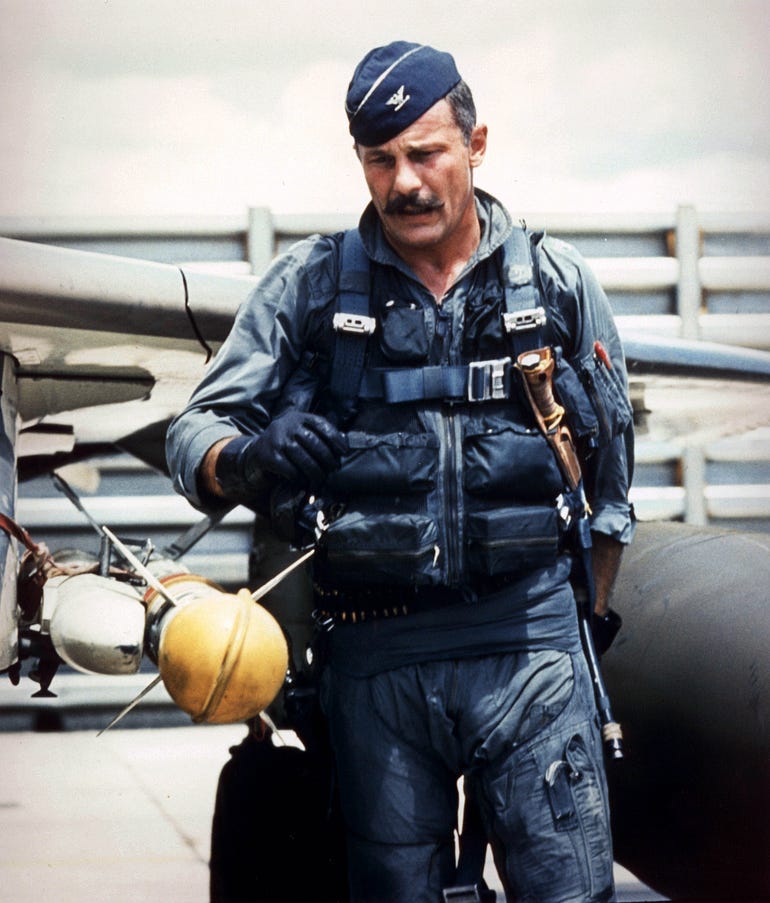
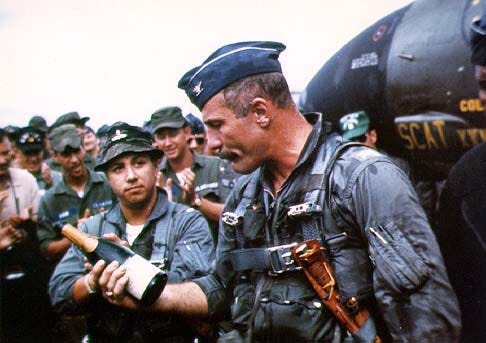
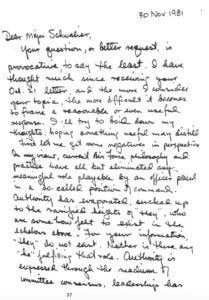
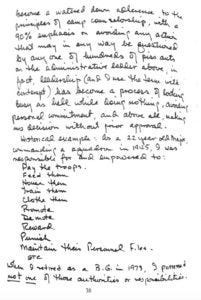
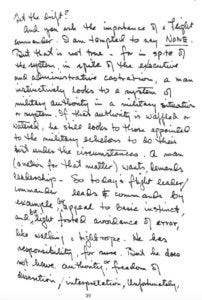
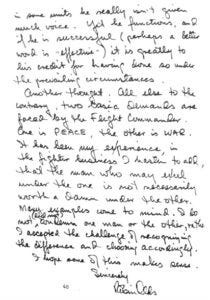
It is critical to keep Air Force history and its many storied leaders alive and well. Otherwise the culture will morph into something no one likes and no one will remember…with any fondness. Like now for example. The only leader I liked was CQ Brown for charging up the AF to actually change its focus away from bombing cavemen to fighting real threats like China. Rebuilding our war fighting capability is extremely important to deterring leaders like Xi and their small circles of yes men from making stupid decisions like Putin. Brown did just that.
Thank you TC…sharing this with my unit.